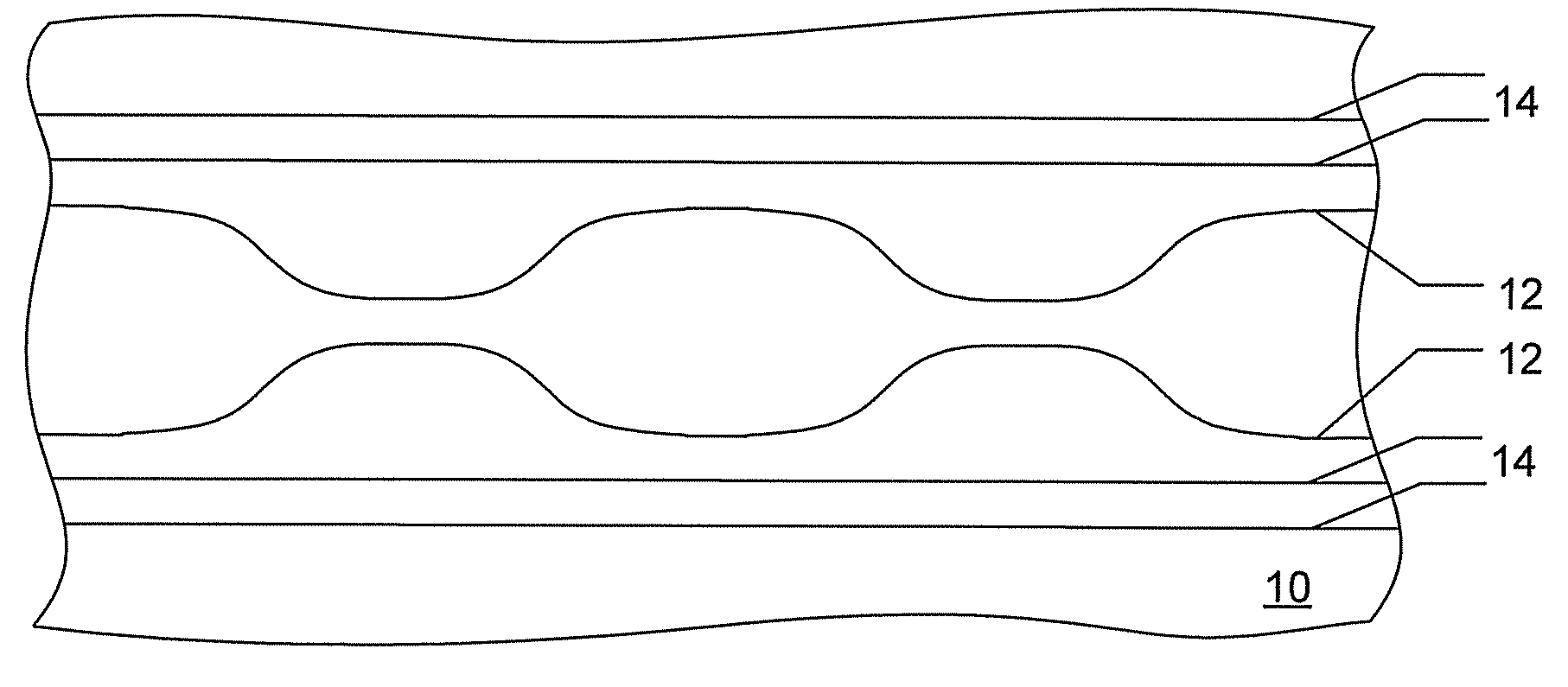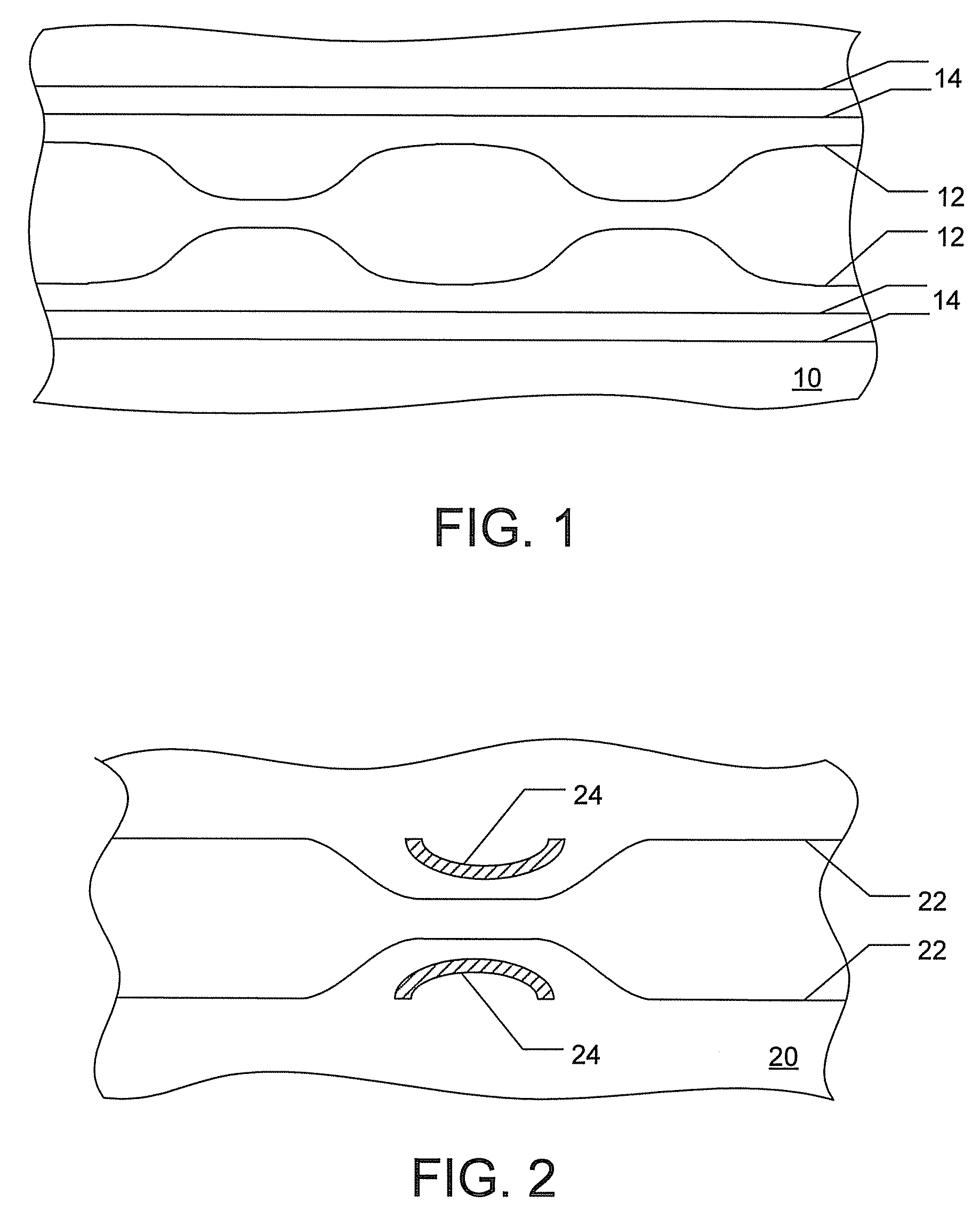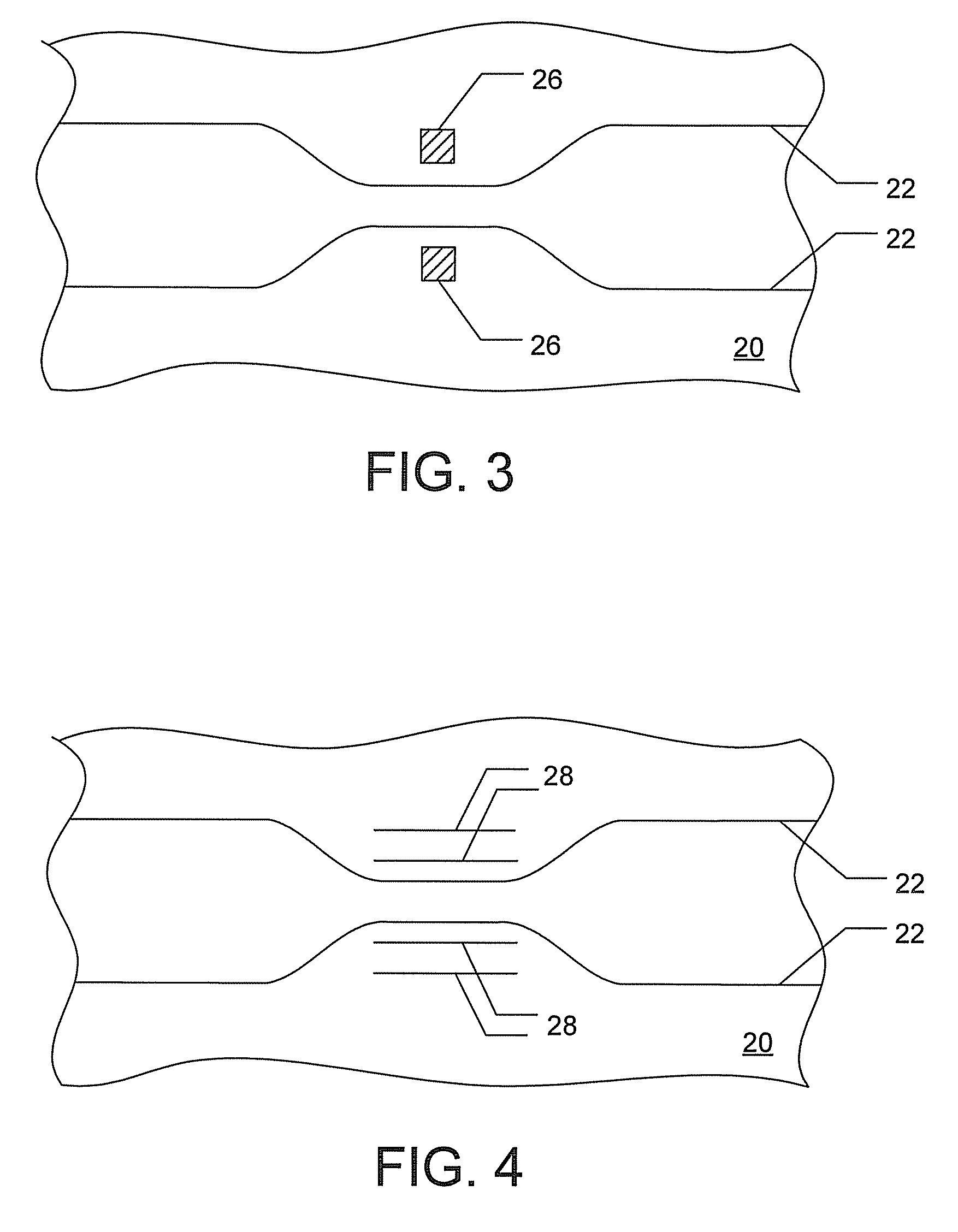Methods to reduce polarization dependent loss in planar lightwave circuits
a technology of planar lightwave circuit and polarization dependent loss, which is applied in the direction of optical waveguide light guide, optical light guide, instrument, etc., can solve the problems of polarization dependent loss in optical network components affecting system performance, stress is present in the device, and the polarization dependence of the waveguide, so as to reduce polarization dependent loss, reduce the effect of polarization dependent loss
- Summary
- Abstract
- Description
- Claims
- Application Information
AI Technical Summary
Benefits of technology
Problems solved by technology
Method used
Image
Examples
Embodiment Construction
[0028]The present invention provides avenues for reducing polarization dependent loss in OICs by tailoring and / or controlling stress. Stress and polarization dependent loss in OICs can be mitigated by positioning dummy waveguide structures proximate operable waveguides functioning as couplers; by positioning dummy waveguide structures proximate operable end waveguide channels; by positioning dummy metal structures proximate operable metal structures; by maximizing the symmetry of metal structures relative to the operable waveguides; by applying mechanical stress to the OIC / waveguides; and / or by controlling the metal deposition conditions to regulate stress between adjacent metal structures.
[0029]Since stress on operable waveguides causes birefringence resulting in polarization dependent loss, reducing the stress and / or making the stress uniform upon substantially all portions of a waveguide and / or upon all waveguides in a given OIC, reduces polarization dependent loss in the OICs co...
PUM
| Property | Measurement | Unit |
|---|---|---|
| diameter | aaaaa | aaaaa |
| diameter | aaaaa | aaaaa |
| thickness | aaaaa | aaaaa |
Abstract
Description
Claims
Application Information
 Login to View More
Login to View More - R&D
- Intellectual Property
- Life Sciences
- Materials
- Tech Scout
- Unparalleled Data Quality
- Higher Quality Content
- 60% Fewer Hallucinations
Browse by: Latest US Patents, China's latest patents, Technical Efficacy Thesaurus, Application Domain, Technology Topic, Popular Technical Reports.
© 2025 PatSnap. All rights reserved.Legal|Privacy policy|Modern Slavery Act Transparency Statement|Sitemap|About US| Contact US: help@patsnap.com



